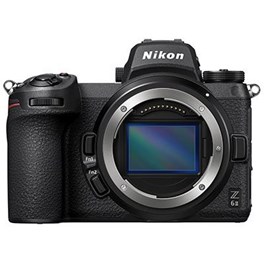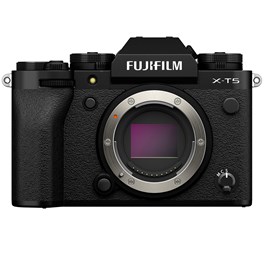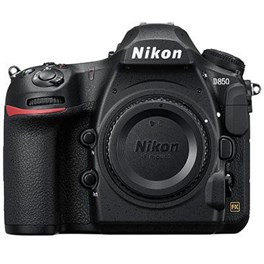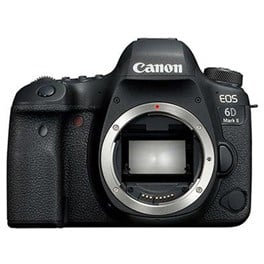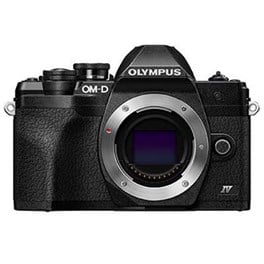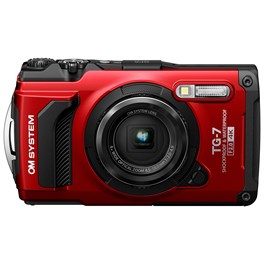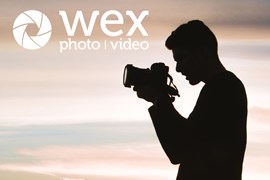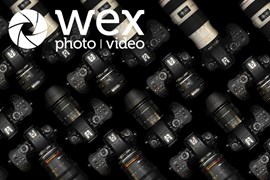
When it comes to the best camera for macro photography, you have a lot of choices available to you. Pretty much any camera can be made to produce excellent macro images – the trick is to pair it with the right lens. As such, when you’re picking your camera for macro, one of the best things to do is to look at the lenses available. You can learn more in our macro photography guide.
As such, we’ve focused our guide on interchangeable-lens system cameras, as these give you the flexibility to craft a macro setup for spectacular close-up images. We’ve included mirrorless cameras, DSLRs and medium format cameras, as well as a dedicated budget section for those who have less to spend.
Our team have spent plenty of time with all of these cameras, and we’re only recommending models that we feel confident provide macro shooters with real value. So, whether you’re a total beginner to close-up shooting, or an experienced enthusiast looking for your next upgrade, you should be able to find the right macro camera here for you.
Quick Navigation
Best Mirrorless Camera for Macro Photography
Modern mirrorless systems offer a huge range of options for macro shooters. With mirrorless being the major focus for most major camera manufacturers moving forward from 2023, users are spoilt for choice when it comes to picking both cameras and lenses for macro shooting. Whether you want to splash out on a full-frame system or pick a lighter camera using a smaller sensor format like APS-C or Micro Four Thirds, a mirrorless system will set you up well to take fantastic macro images.
When making our picks, we’ve aimed for cameras that provide a solid all-round feature-set and have a robust selection of macro lenses to pair with them. We’ve not picked the top-end, most expensive cameras for professionals, but have instead looked for sensibly priced enthusiast cameras that cover all the bases macro shooters need. If these are out of your budget, scroll to the bottom of this page where we have a dedicated section of budget macro cameras.
Nikon Z6 II Digital Camera Body
Finance available
Despite 2020 releasing a variety of contesting mirrorless camera bodies, Nikon's Z6 remained one of the top mirrorless cameras that you can purchase on the market. So, what does the Nikon Z6 II have in store for us? Nikon took on board all the user feedback that came back from the 1st-Gen Z6 to produce this vastly improved Nikon Z6 II camera body. Most notably, some additional features of this camera body include lightning-fast and incredibly powerful Dual EXPEED 6 image processors, vastly improved autofocus and tracking capabilities as well as the addition of a second card slot. Yes, the Nikon Z6 II features dual card slots, one for XQD & UHS-II SD cards and the super-fast CFexpress cards. The Z6 II also enables the use of a battery grip for pro-level shooting and vertical shooting controls. This camera offers everything that is needed for an enthusiast or professional hybrid photographer or filmmaker.
£2,069.00 View
Pros:
- First-rate selection of macro lenses
- Superb image quality
- Dual card slots and USB-C hot charging
Cons:
- LCD screen doesn’t fully articulate
If you’re going to shoot macro, the Nikon Z series is an excellent place to start. You have access to some absolutely sublime macro lenses, particularly the Nikon Z MC 105mm f2.8 VR S, which delivers absolutely faultless image quality even for extreme close-up work. As for the Z6 II itself, it’s an exemplary camera, delivering superb full-frame images in a range of shooting situations. With dual card slots and the ability to hot-charge via USB-C while continuing to shoot, it’s a camera that’ll cope with a hard day’s work.
The body of the camera is durably built for working outside, with weatherproofing. There’s also a beautifully large and sharp viewfinder to use for composition, in addition to the tilting LCD screen. It’s difficult to imagine any macro shooter not finding the Z6 II meeting all of their needs and then some. If you want more resolution, try the Nikon Z7 II, and if your budget doesn’t stretch this far, give the Nikon Z5 a go.
Fujifilm X-T5 Digital Camera Body - Black
Fujifilm’s X-T5 Digital Camera Body is a step above from the X-T4 that is more akin with the flagship X-H2 camera. Capture stunning images with the 40MP X-Trans CMOS sensor and powerful X-Processor 5. For videographers, the camera can capture gorgeous 6.2K, 10-bit 4:2:2 video and externally record Apple and Blackmagic RAW codecs. With ease-of-use features too, this is a small but mighty camera.
£1,599.00 View
Pros:
- Some spectacular macro lenses available
- Gorgeous quality JPEGs right out of camera
- Old-school manual controls
Cons:
- High-res multi-shot mode needs to be assembled on a computer
Fujifilm’s X-T5 is a stills-first camera, a magnificent APS-C shooter for enthusiasts, and one that produces punchy, dynamic images. It’s perfect for macro photography – in part because of its weatherproof build and tactile manual controls, but also because of the superb X-mount lens selection. Macro shooters have their pick of some incredible lenses in this system – the star of the show is the Fujifilm XF 80mm f2.8 LM OIS WR Macro, a stunning telephoto with incredible close-up capabilities and beautiful bokeh. However, there’s also the more budget-friendly XF 60mm f2.4 R Macro and XF 30mm f2.8 R LM WR Macro to choose from.
Fujifilm cameras have a reputation for spectacular JPEG quality that can soften the hearts of even the most die-hard RAW enthusiast. With 40MP of resolution to play with, the X-T5 is terrific for making big prints of your images, and the in-body image stabilisation system provides up to seven stops of effective compensation.
Best DSLR Camera for Macro Photography
DSLRs have a number of advantages for macro shooters. The fact that DSLR systems have been running for a long time – stretching back to the days of film SLRs and analogue photography – means that there is an enormous range of lenses to play with, especially if you’re willing to shop second-hand. In macro photography, super-fast autofocus tends not to be so important (as accuracy is much more important than speed) and so it’s an ideal playground to experiment with different and vintage lenses. DSLR systems are perfect for this.
Of course, this doesn’t mean you’re compromising on camera quality. Modern DSLRs still come bursting with modern features that can help you nail the shot, like vari-angle-touchscreens, great high-ISO performance and back-illuminated sensors. We’ve picked out a couple of DSLRs that will excel at producing macro imagery when paired with the right lenses.
Nikon D850 Digital SLR Camera Body
Save £250, was £3249
Introducing, the Nikon D850, a photographic workhorse that has been equipped with a huge 45.7 megapixel sensor that will not disappoint. The 45.7 megapixel back-illuminated, full-frame CMOS sensor and extended battery life will keep up with all any photographic adventure you can throw its way, from the studio photo shoots to the remotest places on Earth. The tough and rugged magnesium-alloy build and all-weather sealing allow you to take its power wherever you want to go. The stunning image quality and impressive performance of this camera makes it the ultimate choice and will continue to be a game changer for years to come.
£2,799.00 View
Pros:
- 45.7MP full-frame image quality
- Great battery life
- Long-life shutter reliability
Cons:
- Relatively big and bulky
The spectacular Nikon D850 is a much-loved DSLR, particularly among wildlife photographers, and it has many features that make it a superb option for macro work. Its 45.7MP back-illuminated, full-frame CMOS sensor produces spectacular, dynamic images that print brilliantly, and its weatherproof body is built like a tank – perfect for a day’s outdoor shooting. The battery life is also excellent, rated to 1,840 images per charge, and the shutter is rated to at least 200,000 actuations. The D850 is a robust camera that simply shoots and shoots, and you’ll get many years’ happy macro photography out of it.
Lens-wise, the Nikon F-mount is generously stocked with macro options. Remember that you can often save some cash by looking beyond your camera manufacturer to third-party lens makers – the Sigma 105mm f2.8 Macro EX DG OS HSM is an excellent lens for close-ups that’s also highly affordable.
Canon EOS 6D Mark II Digital SLR Camera Body
Save £80, was £1349
The Canon 6D Mark II represents a marked upgrade on its predecessor. A new 26.2MP full-frame sensor offers enhanced low-light performance , greater depth-of-field control, and stunning image quality. The camera's ISO has also been upgraded, with the upper limit now expandable to 102,400.
£1,399.00 View
Pros:
- EF-mount has some seriously good macro lenses
- Excellent vari-angle rear touchscreen
- Focusing works well in Live View
Cons:
- No 4K video
No one is going to argue with you if you plan to shoot macro on Canon DSLRs. With some of the greatest cameras and lenses ever made, you’ll be well-equipped to get some spectacular close-up images on a Canon EF setup. We recommend the Canon EOS 6D Mark II as a starting point for most users. It’s a full-frame all-rounder that comes at an affordable price point, delivering glorious image quality and a top-notch shooting experience.
With the EF-mount, you’ll be able to make use of spectacular lenses like the Canon EF 100mm f2.8L Macro IS USM, while the EOS 6D Mark II’s superb low-light performance helps you out when the lighting conditions aren’t the best. With a vari-angle touchscreen, the EOS 6D Mark II lends itself well to unusual tripod setups, and the Live View focusing works really well. There are a couple of weaker aspects of this camera, but the good news is that they aren’t too much of a concern for macro shooters. Its tracking autofocus isn’t the fastest – but for close-ups, you don’t need it. And, we’re guessing you’re not that bothered that the EOS 6D Mark II doesn’t shoot 4K video? Thought not.
Best Medium Format Camera for Macro Photography
Shooting macro on medium format can require a little more skill on the part of the photographer than other formats. However, with modern mirrorless medium format systems and an increase in the number of dedicated macro lenses available for digital medium format, it’s much more doable than it once was, and you can get absolutely spectacular results.
We’ve picked out a couple of comparatively affordable medium format options for this section, and made sure that both systems offer a number of macro lenses for close-up shooting. If you want to produce macro images with spectacular depth, detail and dynamic range, medium format is the best way to do so – here are the cameras we recommend.
Pros:
- Absolutely superb image quality with Film Simulation options
- Affordable for medium format
- Effective stabilisation
Cons:
- Relatively few macro lenses in system
The Fujifilm GFX 50S II is a 51.4MP camera that captures brilliantly vivid and detailed images, with that medium format “depth” you just can’t get any other way. It’s a terrific choice for macro work, with enormous dynamic range, a weatherproof build and an effective stabilisation system to help with those times you’re shooting handheld. If you’re working with a static subject, you can also take advantage of the Pixel Shift Multi-Shot to produce images with a whopping resolution of 200MP.
Lens-wise, there are a couple of current macro options for the GF-mount. The Fujifilm GF 120mm f4 R LM OIS WR Macro is a pretty spectacular optic, producing an equivalent focal length of 95mm, and images with minimal aberration and stunning front and back bokeh. Also, relatively new to the system is the very exciting GF 110mm F5.6 T/S Macro, a telephoto tilt-shift that produces stunning-quality images free from aberration.
Pentax 645Z Medium Format Camera Body
The Pentax 645Z is a professional medium format digital SLR with an extremely large 51.4-megapixel CMOS sensor to deliver high-resolution images with true-to-life colour and detail. Featuring a water-resistant, dust-proof construction, the Pentax 645Z offers a wide ISO range of ISO 100-204,800, a tiltable 3.2" LCD, 3 fps continuous shooting, dual SD card slots, and Full HD video.
£4,499.00 View
Pros:
- Weatherproof build
- Broad ISO sensitivity
- Good lens selection
Cons:
- Bulkier and heavier than recent mirrorless medium format cameras
- No stabilisation
Pentax’s 645Z pre-dates the rush of agile mirrorless medium format cameras precipitated by Fujifilm and Hasselblad, and it’s undeniably a bulkier affair than a GFX or XCD camera. It lacks more modern features that these cameras have, like phase-detection autofocus or stabilisation. However, it still shoots fantastic images and makes for an excellent choice for macro work. With a wide ISO sensitivity range, it’s versatile and can keep shooting in challenging lighting conditions.
Lens-wise, you also have your pick of some quality glass, including the Pentax-D FA645 HD 90mm f2.8 ED AW SR Macro and the Pentax-FA645 smc 120mm f4 Macro. The 90mm lens incorporates Pentax’s Shake Reduction (SR) mechanism, providing a stabilisation effect to help keep hand-held shots sharp. While you’ll likely be working on a tripod mostly to capture macro images with this setup, it’s still useful to have, and further improves the versatility of an already impressive system.Best Budget Camera for Macro Photography
Macro shooting arguably has a higher price ceiling than other genres of photography, as the requirements are a bit more specific. You need a lens that’s reasonably capable of close-up shooting, and that can just mean spending a bit more than you would for shooting, say, street images or portraits. But don’t despair – there are plenty of budget-friendly options for macro, and we’ve rounded them up in this section of the guide.
We’ve included a mirrorless option and a great DSLR to get started on macro photography. And, for something different, we’ve also included a waterproof compact camera that offers some impressive macro modes. While you won’t get the same kind of quality you’d get from a full-frame DSLR or similar, you’re also paying a fraction of the price and still getting excellent close-up images.
Pros:
- Well-suited to beginners
- Useful vari-angle touchscreen
- Controls well and produces great images
Cons:
- No weatherproofing
If you’re just getting started with macro photography, the Canon EOS 250D is an ideal platform to learn on. It’s a beginner DSLR with a vari-angle screen and an optical viewfinder, and its APS-C sensor produces high-quality images. Canon has included a number of useful guide modes and helpful tutorial functions for those who need help getting to grips with the camera.
The EOS 250D uses the EF-S lens mount, meaning you can use any lenses that fit Canon DSLRs – though some of the full-frame macro lenses might make for quite a front-heavy setup, and the APS-C crop factor will mean you’re working with quite a tight field of view. A lens that we often have available second-hand is the Canon EF-S 60mm f2.8 USM Macro, which provides a 96mm equivalent focal length and a 20cm minimum working distance.
Olympus OM-D E-M10 Mark IV Digital Camera Body - Black
The Olympus OM-D E-M10 Mark IV is a compact, lightweight and impressive camera body that is designed with travelling and mobile creatives in mind. It features a redesigned grip, faster and more precise AF, and powerful 5-axis image stabilisation which together allow you to have a steady hand and be able to capture the action in front of you in stunning detail without camera-shake. It comes with a useful flip-down LCD monitor which makes for well-composed selfies and vlogs. Equally, it has a high-definition EVF that provides you with real-time settings and a crystal clear image.
£549.00 inc. Cashback View
Pros:
- Lightweight and easy to use
- Huge selection of affordable macro lenses
- In-camera USB charging
Cons:
- Smaller sensor
Micro Four Thirds is a great system to consider if you’re looking to build a macro photography setup without spending too much, and the Olympus OM-D E-M10 Mark IV is an ideal starting point. A beginner-friendly mirrorless camera, this lightweight shooter produces brilliant images and offers lots of helpful features like 5-axis in-body stabilisation.
Lens-wise, you have lots to pick from. Affordable lenses like the Olympus M.Zuiko Digital ED 60mm f2.8 Macro and Olympus M.Zuiko Digital ED 30mm f3.5 Macro are a good starting point. Remember that the smaller sensor means a 2x crop factor, so the effective focal length of the lens is double the stated focal length. For a more premium option, there’s also the spectacular OM SYSTEM M.Zuiko Digital ED 90mm f3.5 Macro IS PRO. And remember that you can use Panasonic Micro Four Thirds lenses interchangeably on this camera, so optics like the Panasonic 45mm f2.8 Macro Leica D Vario-Elmar are also in play.
OM SYSTEM Tough TG-7 Digital Camera - Red
Venture further, dive deeper, and unveil more detail with OM SYSTEM’s Tough TG-7 12MP digital camera. Lightweight, compact, and rugged enough for outdoor enthusiasts, the TG-7 is waterproof to an impressive depth of 15m, shockproof to 2.1m, crushproof up to 100kg, and freezeproof at -10°C. It also boasts 4K video, an f2 wide 25-100mm 4x optical zoom lens, and a 12-megapixel backlit CMOS sensor.
£499.00 View
Pros:
- Super-tough waterproof build
- Slim and portable
- Multiple macro shooting modes
Cons:
- Small sensor impacts image quality
- Fixed lens limits flexibility
We would normally think twice about recommending a compact camera for macro photography, as generally it’s best if you have the flexibility to attach a dedicated macro lens. However, the OM System Tough TG-7 makes for a great budget option for macro shooters for a number of reasons – not just the price. For one, it’s a tough compact, meaning it’s waterproof, shockproof, freezeproof and crushproof. If you’re looking for an adventure-ready camera, you can hardly ask for better.
For two, the TG-7 boasts a number of dedicated macro modes designed to facilitate close-up shooting. As well as the standard Microscope mode, there’s also the option to try your hand at Focus Stacking, and even macro modes that are specifically designed to work underwater. That’s something no other camera on this list can offer; at least, not without an expensive housing. This makes the OM System Tough TG-7 a unique proposition among macro cameras, and one that’s well worth snapping up.

FAQs
What is Macro Photography?
Macro photography is a specialised form of close-up photography that captures small subjects at a 1:1 ratio or larger, revealing intricate details not visible to the naked eye. It often involves shooting small objects like insects, flowers, or textures.
What equipment is important for Macro Photography?
Essential equipment includes a macro lens for close focusing, a sturdy tripod to reduce camera shake, and good lighting, such as a ring flash or diffused natural light. Extension tubes and lens filters can also enhance macro capabilities.
What is the ideal lighting setup for Macro Photography?
The ideal lighting setup often involves diffused natural light or external sources like ring flashes or LED lights. Diffusers and reflectors can help control harsh shadows and highlights, providing even illumination.
How should you manage shallow depth of field in Macro Photography?
Managing a shallow depth of field involves careful selection of the focus point and adjusting the aperture. Focus stacking, a technique combining multiple images with different focus points, is also effective in achieving a greater depth of field.
What are the best subjects for Macro Photography?
The best macro subjects include insects, flowers, water droplets, textures, and small objects with intricate details. Experiment with various subjects to discover unique perspectives and details that may not be immediately apparent.
How can I get started with Macro Photography on a budget?
Start with affordable options like extension tubes or close-up filters to convert a standard lens into a makeshift macro lens. Utilise natural light and DIY diffusers. As you progress, consider investing in a dedicated macro lens and additional accessories.
How do we decide?
Our in-house photography experts, store staff and partners all work collaboratively to pour over these guides. The cameras and equipment recommended in our guides are based on their personal opinion, empirical experience and of course, feedback from our customers. We way up price, features, quality and the all-important 'je ne sais quoi' to make sure we recommend products that will delight and inspire.
If you would like more advice on any purchase our contact centre staff are here to help. Alternatively, you can reach us via email or social media. And don't forget. If you were to purchase anything based on our recommendations you'll be covered by our full returns policy
Buying Guides
